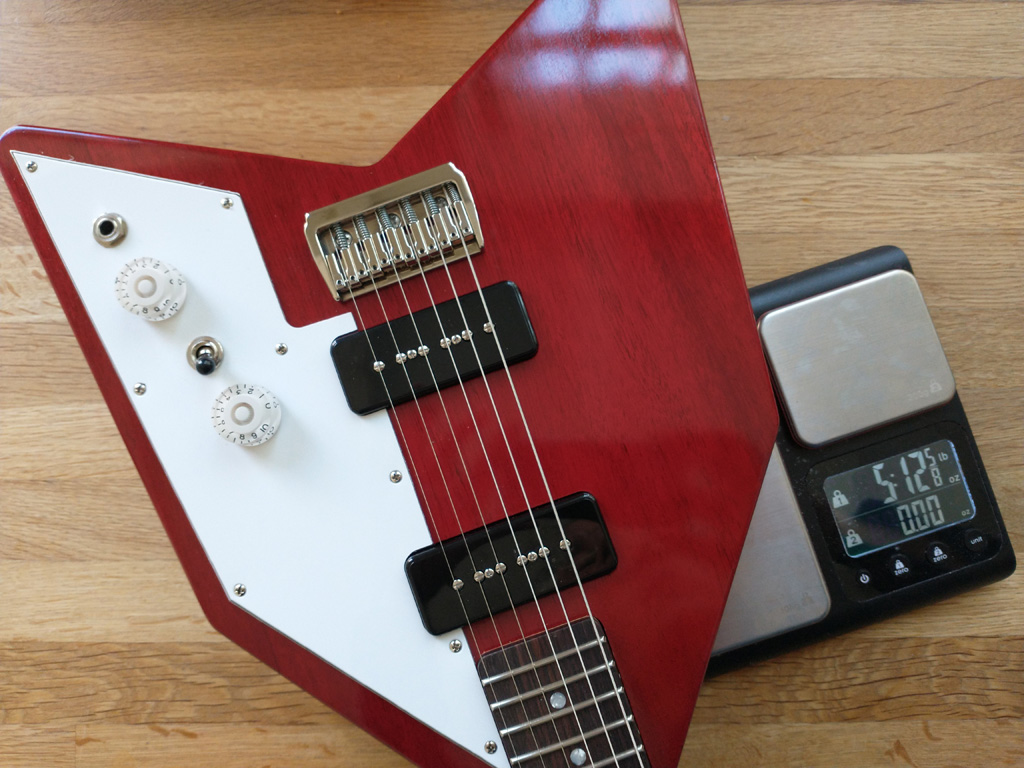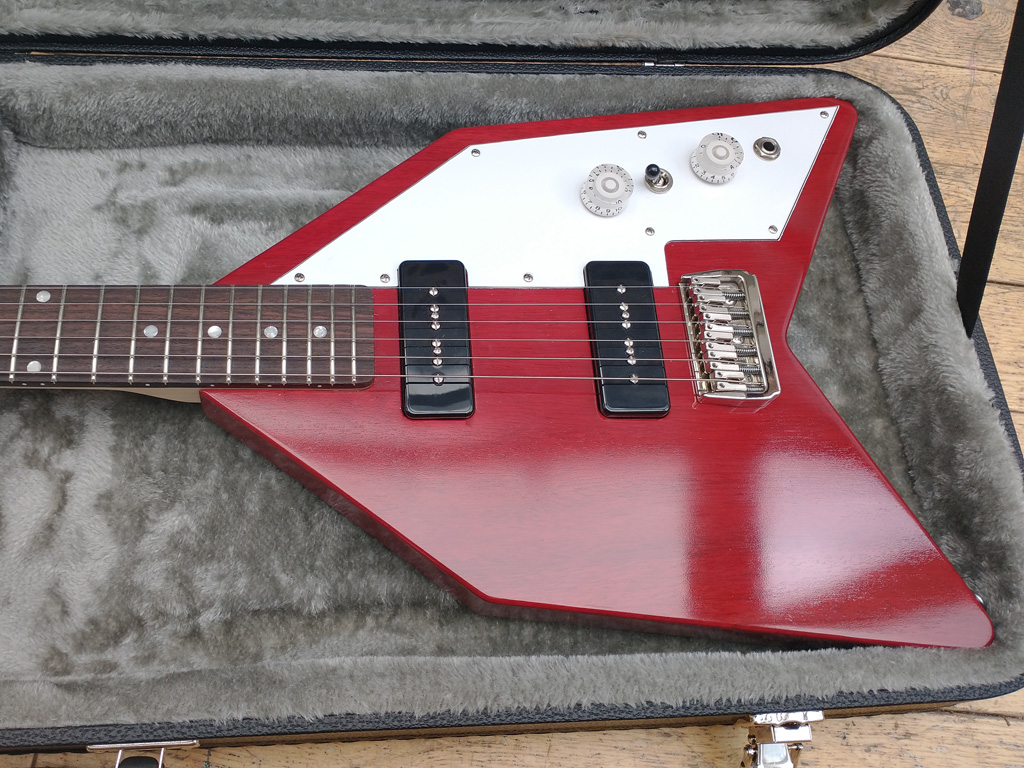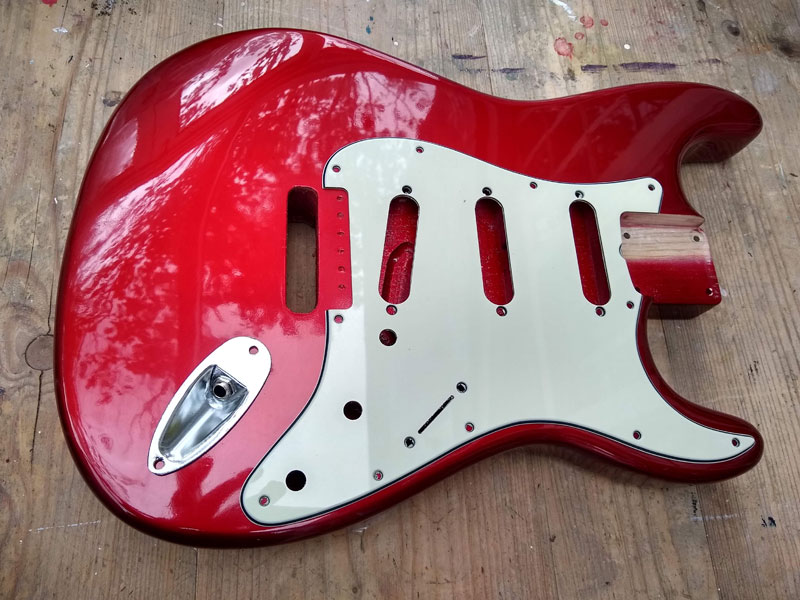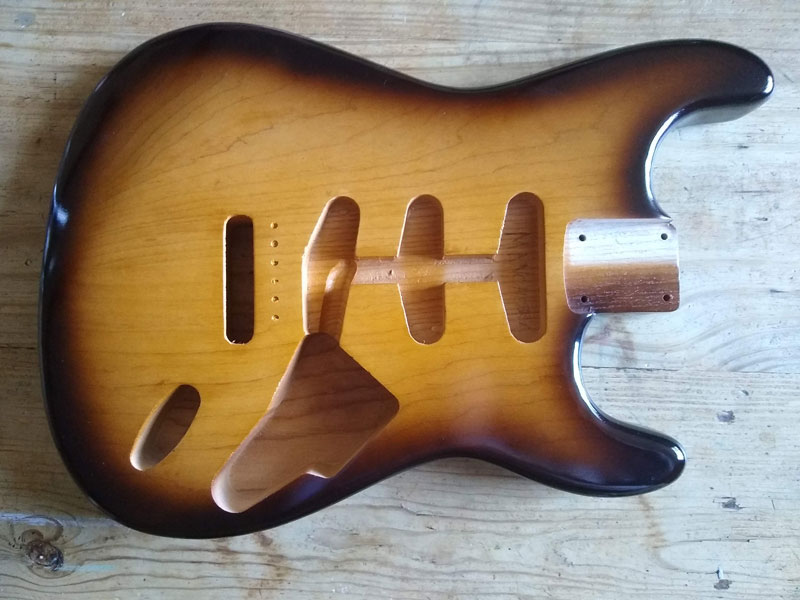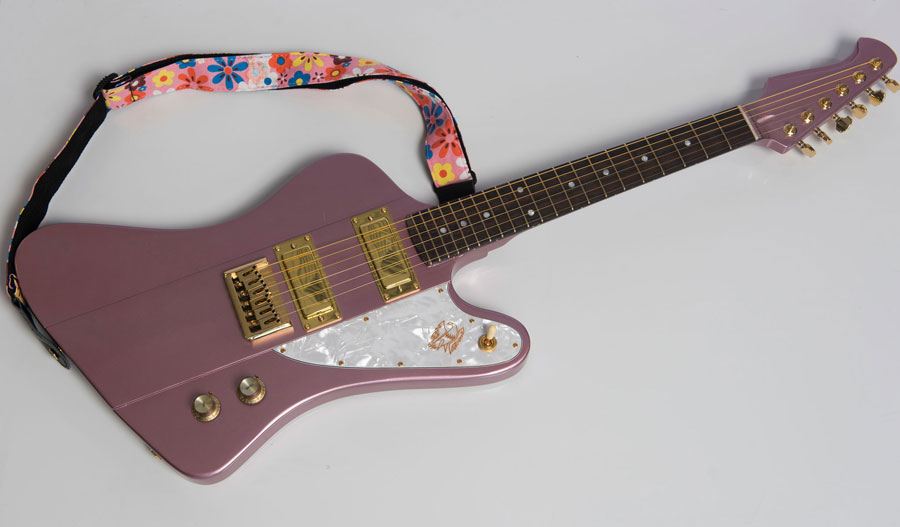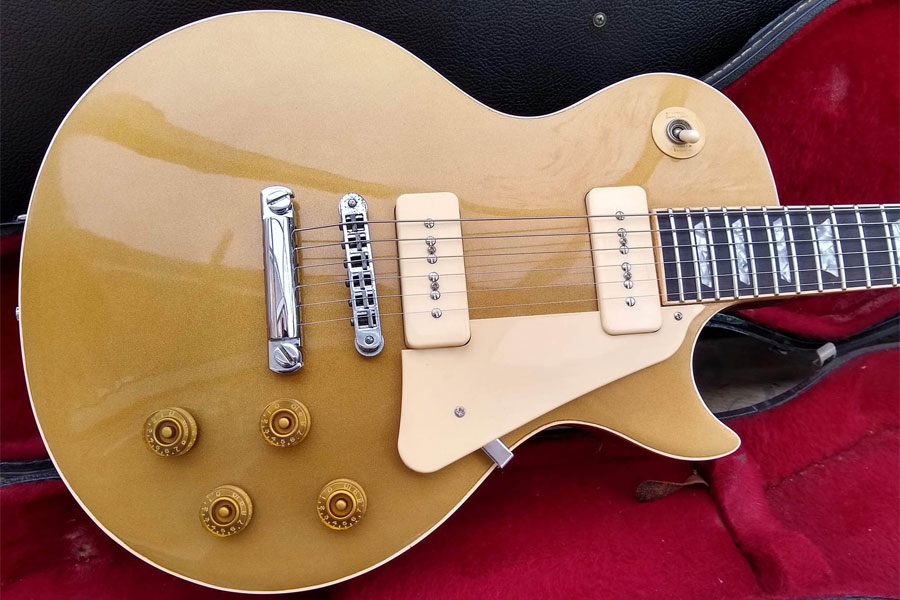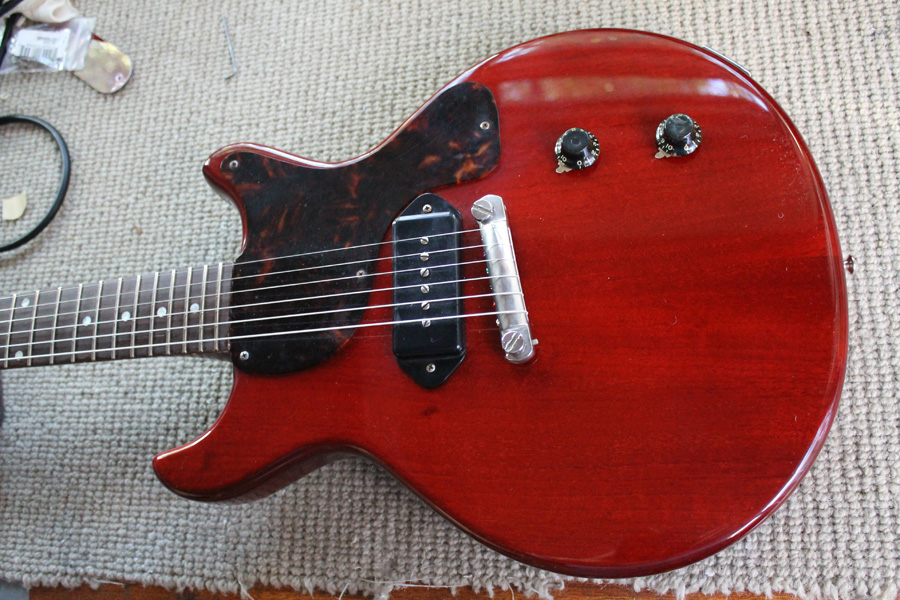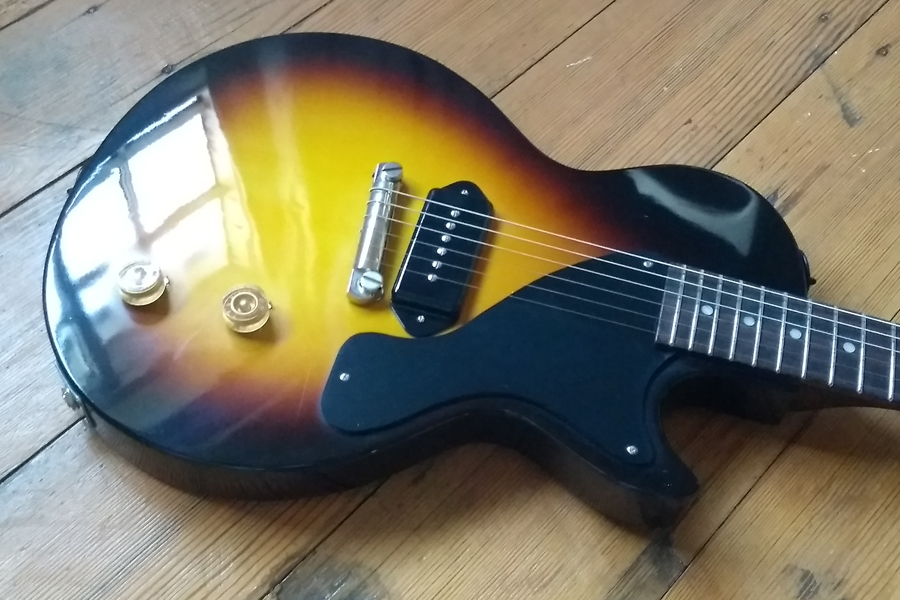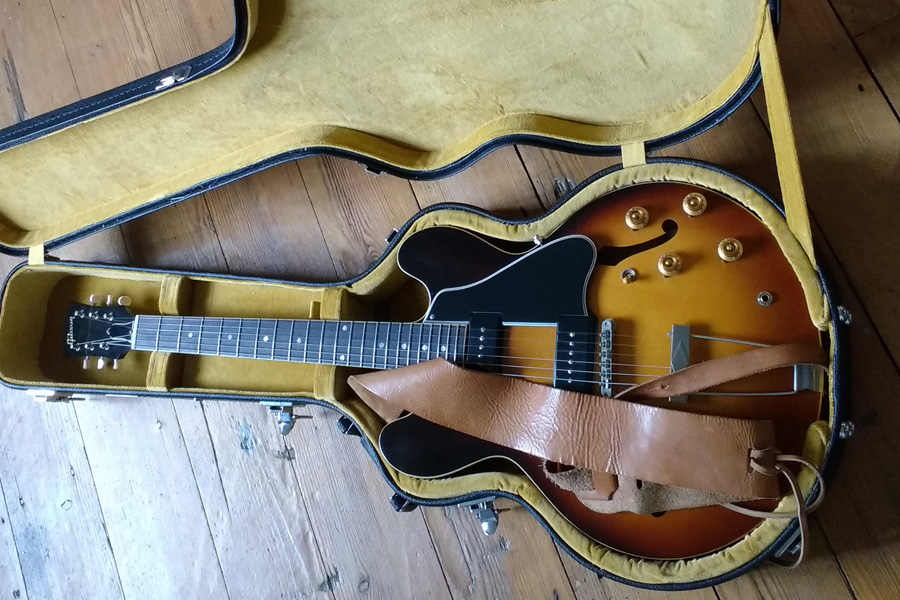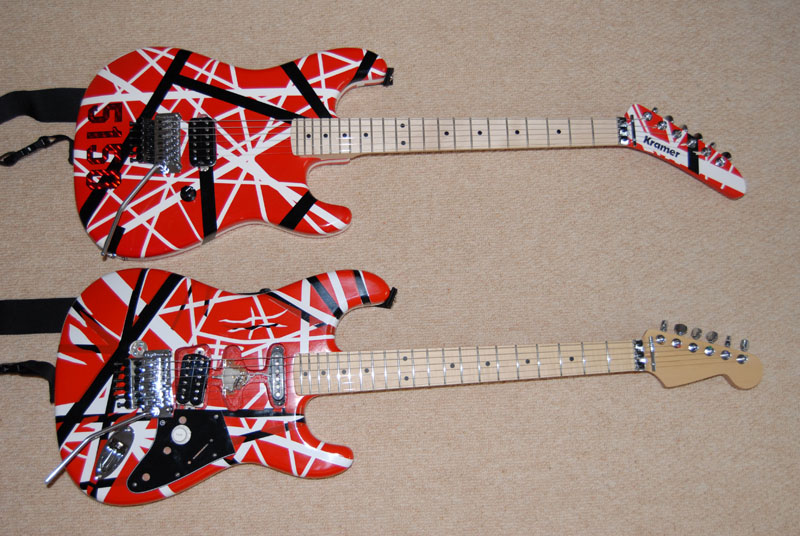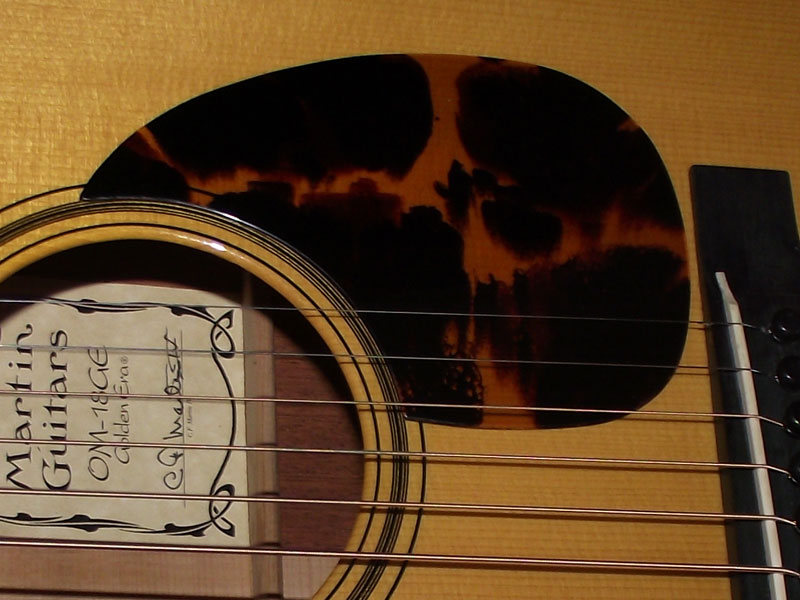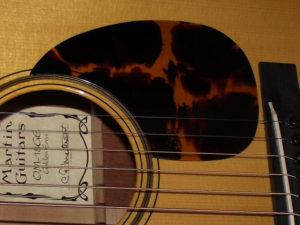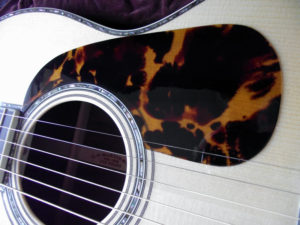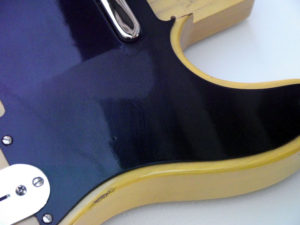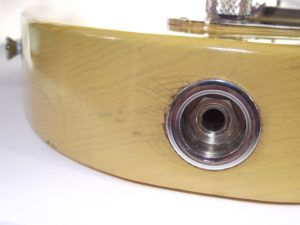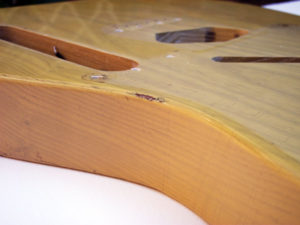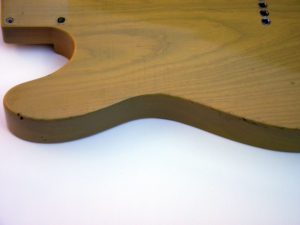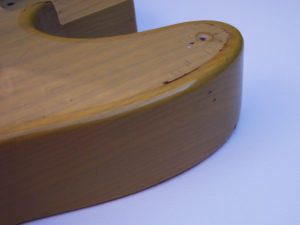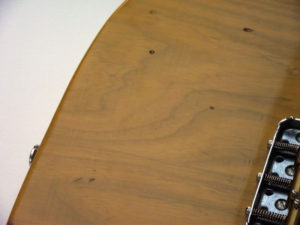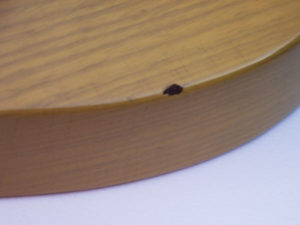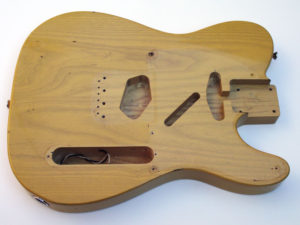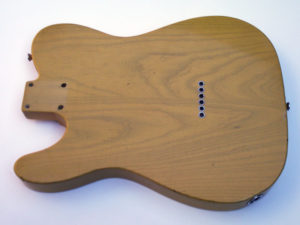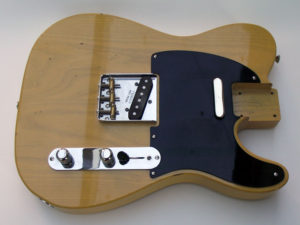
Ozzy Lister – guitar and bass repair
I received an email from a customer who has used my lacquer create tributes to a couple of Van Halen style guitars.
Here’s what he wrote:
Hi Steve,
I finally finished my Van Halen guitars, painted with Nitrocellulose lacquer that you supplied. I attach a couple of pictures, as I promised I would when they were done.
The "Frankenstein" guitar is fitted with original Floyd Rose trem and EVH frankenstein pickup, the main Kramer 5150 guitar again has an original floyd rose but has a custom wound Seymour Duncan EVH78 pickup fitted. The other Kramer style guitar is a cheap copy I bought unpainted off ebay to use as a painting prototype, but with a little work, it has made a decent player and the stock pickup sounds OK through a good rig.
Thanks for the lacquer, it was great to work with (after our telephone conversation in the summer I left each colour a full 2 weeks to harden before applying the masking tape for the next one. This worked well and there was no damage from the tape). I used "Frog" tape along with car striping tapes for the thin lines. I started with B&Q "Select" blue masking tape, which was terrible and left sticky deposits on the paint when it was peeled off so I stopped using it.
Best regards
Russell

It was my pleasure to make pickguards for two Martin acoustic guitars this week.
The pickguards are made from Tortis, invented by John Greven and sold through Luthiers Mercantile. This material makes beautiful pickguards, it polishes to a high gloss and the edges can be rounded for a very organic appearance.
Martin OM-18GE
Martin 000-42
More as an experiment than anything else, I decided to have a go at relicing the body I finished in August.
The first job is to add a few knocks and scrapes. I dropped a set of keys on the front and back and gently knocked the edges in a few places. Any damage on the lacquer surface acts as a centre for cracks and the crazing radiates out from dings.
Rather than use a chilling spray, which I find gives small “china plate” checking, I placed the whole body in a domestic deep-freezer overnight (thanks Pete!) Using a freezer causes the lacquer to crack in a natural manner, across the grain.
As you can see below, the freezer treatment resulted in fine, subtle cracking such as is often found on vintage instruments.
While the body was still very cold, I rubbed it all over with brown dye which stained the bare wood and penetrated the cracks. Once the body warms up, the cracks will close so it’s important to do this whilst still chilled.
I also gave the relic treatment to the pickguard, applying the typical wear patch.
Photographing the detail proved very difficult as my autofocus camera kept focusing on whatever was reflected in the body, but here are a few pictures to show the results. You can click on the photos to see them full size.

